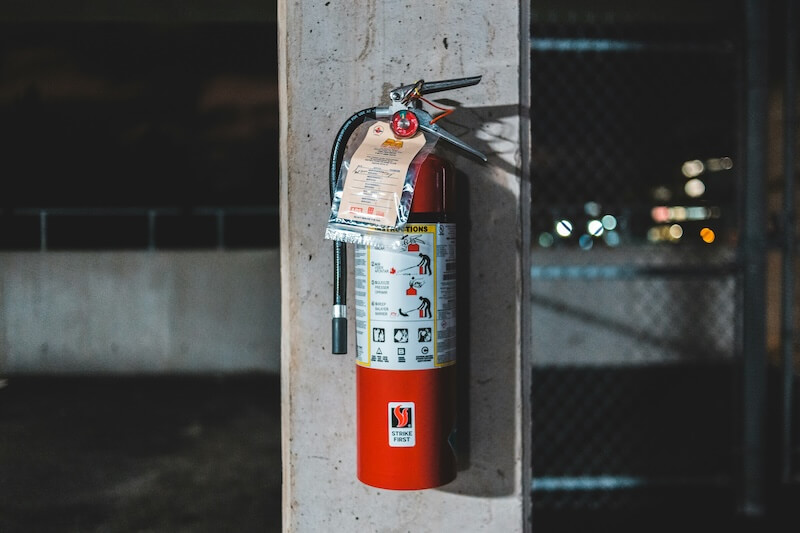Cycling with ease, that’s the whole point of an electric bike. But when it comes to the battery, it’s sometimes another story: overheating, short-circuit, even fire… The risks exist, especially during charging.
Good news: in France, your home insurance can cover you in case of an incident, provided you know the right coverages. Whether you’re riding an e-bike for pleasure or to get to work, whether you’re an owner or a tenant, we’ll explain how to ride with greater peace of mind.
Summary
- The lithium batteries in electric bikes can overheat or catch fire, especially if charged unsupervised, with uncertified equipment, or due to mishandling.
- Home insurance can cover accidental fires linked to an e-bike, including compensation for material damage, property damage, and alternative accommodation
- Watch out for exclusions: negligence, modified or non-compliant e-bikes, or speed bikes not specifically insured may compromise coverage.
- To prevent risks, adopt the right habits: certified chargers, no DIY tinkering, proper storage, regular inspections, and keep a fire extinguisher nearby.
- Lemonade covers electric bikes ≤ 25 km/h with civil liability and offers an optional extension for bikes > €5,000 as well as a “Complete Theft” guarantee under certain conditions.
Why can an electric bike battery catch fire?
Electric assistance is magical for climbing hills. But its lithium battery requires a bit of caution. It’s efficient, yes, but also super sensitive! And certain behaviors can literally raise the temperature.
Here are the main culprits behind a battery fire:
- An inappropriate or counterfeit charger: incorrect voltage, overheating, short-circuit…
- Overcharging (yes, when you forget to unplug your bike overnight).
- Haphazard storage: damp cellar, terrace in full sun, or after a fall without inspection.
- Non-certified kits or parts, or a little too much DIY modification.
And the consequences shouldn’t be taken lightly: a battery fire can cause serious material damage, burns, and even block escape routes in the home.
The solution? Approved equipment, a bit of diligence, and above all: never charge your bike just anywhere, any old way.
Does home insurance cover electric bike battery fires?
An electric bike battery catching fire doesn’t happen every day. So when it does, you’ll want to be properly insured. The good news?
Your home insurance can provide coverage, as long as the fire is accidental and the bike is not considered a motor vehicle requiring dedicated insurance.
💡Any two-wheeled vehicle with a maximum speed exceeding 25 km/h must be covered by compulsory third-party liability insurance in France. For this reason, standard home insurance policies do not cover damage caused by these bicycles (our home insurance does not replace other compulsory insurance policies).
Here’s what your policy can cover:
| Type of coverage | What exactly is covered |
|---|---|
| Property damage | Your furniture, clothes, or electronics damaged by fire or smoke caused by the battery. |
| Real estate damage | Repairs to your home (walls, ceilings…) if the burning battery caused damage. |
| Relocation expenses | Covering your accommodation if your home is temporarily uninhabitable. |
| Civil liability | If the fire affects your neighbors or common areas, this coverage is triggered. |
Home insurance: coverage exclusions for electric bike battery fires
Even the best home insurance has its limits. If the battery fire is caused by negligence or improper installation, your insurer may only cover part of the costs, leaving you to bear the rest.
Here are the main cases of coverage exclusion:
- Negligence or poor maintenance: if your battery was damaged, poorly stored, or deliberately overcharged.
- Intentional act: yes, this counts too!
- Non-compliant modifications: if you’ve customized your electric bike so much that it no longer complies with road regulations, insurance may refuse to pay out.
- Special case of speed bikes: considered as mopeds, they must be covered by specific insurance (civil liability insurance). If this is not the case, no compensation is possible.
Simply put: follow the rules, keep your bike in approved condition, and store your batteries properly. Otherwise, in the event of a claim, your policy may not cover all the damage.
How to prevent electric bike battery fires (without being paranoid)

You don’t need to be a firefighter to prevent battery fire risks. Just a bit of common sense and some simple rules.
Whether you ride an electric bike, a speed bike, or a scooter, here’s the anti-fire checklist:
1. Use only certified equipment
Avoid dodgy chargers or cheap batteries found online. Stick with the original battery and a compatible charger from recognized brands.
2. Never leave a battery charging unattended
Especially at night. Not in a corner, not in a closet, not under a cozy throw. The ideal? A flat surface, away from anything flammable or near an emergency exit.
3. Check before and after every ride
A weird noise? A battery that’s getting hot or swelling? Signs of impact? Stop everything. Any breakdown or abnormality, no matter how small, deserves your attention (and that of a professional).
4. Don’t store batteries just anywhere
Keep them in a cool, dry place at a stable temperature (around 20–25°C/68–77°F). Not in a car trunk in summer, nor in a humid cellar. And if not in use, store them at half-charge.
5. No improvised DIY
Forget DIY conversion kits or home modifications. For any maintenance or battery replacement, see a qualified technician. Otherwise, your bike insurance may not cover you in case of a claim.
6. Just be prepared!
- Get a fire extinguisher suitable for electrical fires.
- Avoid repeated full discharges—it wears out the battery prematurely.
- Don’t store your devices somewhere inaccessible: in case of fire, you need to be able to react quickly.
7. Don’t forget the rest: Security and insurance
- Protect your bike with an approved lock, securely attached to a fixed point.
- Check your insurance policy: theft or accident guarantees can make all the difference.
- And of course, wearing a helmet is strongly recommended (and even mandatory for speed bikes).
A dedicated bicycle insurance: The tailor-made coverage your two-wheeler deserves
If you’ve just invested in a new or high-end electric bike, it’s best to protect it properly. Spoiler alert: your home insurance doesn’t always cover everything, especially in cases of theft outside the home, vandalism, or bodily injury after an accident.
A dedicated bike insurance goes further:
- It covers your bike in case of theft, even if you’ve locked it up outside.
- It covers repairs or replacement after a fall or attempted theft.
- It can include legal protection in case a dispute arises after an accident.
At Lemonade, we specifically cover:
- Bicycles with a maximum speed of 25 km/h.
- Our coverage includes: civil liability (damage caused to others) and damage due to other covered risks (for example, fire, natural disaster, if the bike is kept indoors).
- If your bike costs more than €5,000, you can take out additional coverage for it.
- You can also choose to add our “Full Theft” option to cover theft outside (provided you take the appropriate preventive measures).
What we don’t cover:
- Any two-wheeled vehicle with a maximum speed higher than 25 km/h. As mentioned above, these require mandatory insurance.
- Accidental damage caused to the bicycle.
- Bodily injuries suffered by the cyclist as a result of an accident.
If your two-wheeler fits the above category or you want to benefit from additional coverage, we can advise you on an alternative insurance.
The right move in any case? Compare insurance offers, read the general terms and conditions carefully, and choose a tailor-made policy adapted to your actual use (daily commute, sports, leisure, etc.).
In summary: Cycle stress-free, but not blindly
The electric bike has everything going for it, but its lithium battery requires a minimum of caution. To avoid any fire risk, rely on good maintenance, simple safety habits, and insurance suited to your needs.
Unsure about your policy, or have a question about coverage? Contact your customer service or ask a professional for advice. It’s better to ask one question too many than to ride without a safety net!



